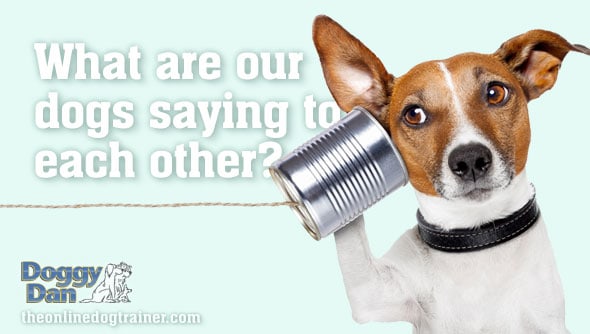Learning to understand your Dog's Body Language
Ever found yourself completely confused by some dog behaviour, with no idea what your dogs are doing or saying to each other?
Sometimes their actions can look completely random. It seems as though there's no meaning to what's going on.
In fact the opposite is true.
But before I discuss our dog's communication abilities, I want to give you a little Christmas present… Click the button below to download the 7 awesome Christmas presents that I'm considering for my dogs:
Now, every action and behavior within a pack can be explained; their actions are like a dance, a conversation as one dog says something (usually through their body language) and the other dog replies.
Of course you need to be able to interpret what they’re saying to understand the conversation.
So I thought I'd share with you a video from inside the members area of my dog training website theonlinedogtrainer.com (members can find it in the Body Language section).
It’s a consult that I recently had with a lovely boy named Odin who was a very submissive Mastiff cross. In the video the dogs will demonstrate a whole range of familiar and not so familiar moves, which I’ll interpret into plain English!

8 clear dog signals
Included in the video you’ll get to see these characteristics in the dog's body language:
- The Shake – When they shake their bodies but are not wet. This relaxes their muscles and is a sign that a dog is relaxing
- The Flirty Twirl – A 360 degree spin right in front of another dog. A sure sign that they are trying to tempt the other dog to play
- The Play Bow – Front end down, back end up. Another clear invitation to play
- A Snarl and snap – One dog telling another off for an action
- Tail up – This is a proud and confident position for a dog to hold their tail
- Tail under – This is a very submissive position for a dog to hold their tail
- Submissive roll over – Where a dog submissively exposes the under side of their belly
- Head over – This action is when a dog places their head over the top of another dog's signalling that they are above them in the pack
Submissive behaviour in dogs
We’ll also take a look at the submissive behaviour of Odin and discuss whether it's normal and acceptable and whether he needs help. I shall also explain why it is that dogs who have a lot of responsibility on their shoulders and think that they are in charge, will not play much with other dogs. This is a far more common occurrence in dogs than people realise as it's very subtle. I’ll also point out the simple solution!
As you’ll see from the video it's amazing how dogs can get along when they're all good communicators… A bit like people really!
Want to know more?
I invite you to try my program The Dog Calming Code.
This program is designed to teach you how to help get your dog to calm down so he listens when it matters most!
All the best, .
.






